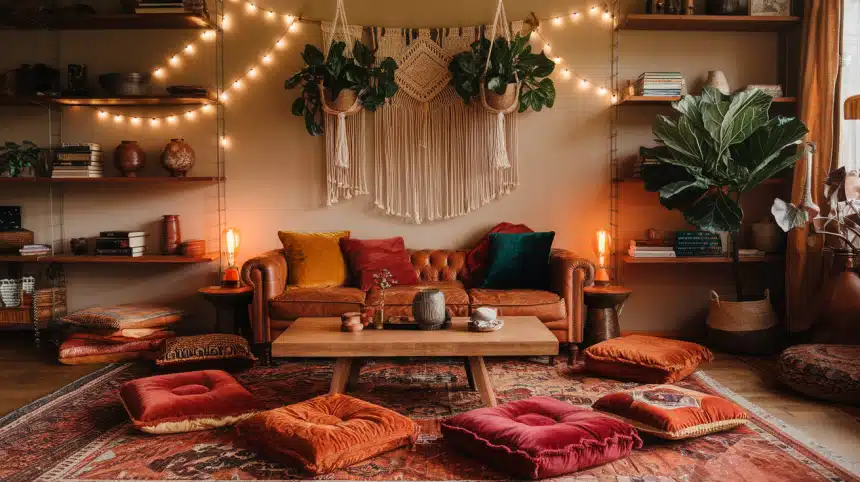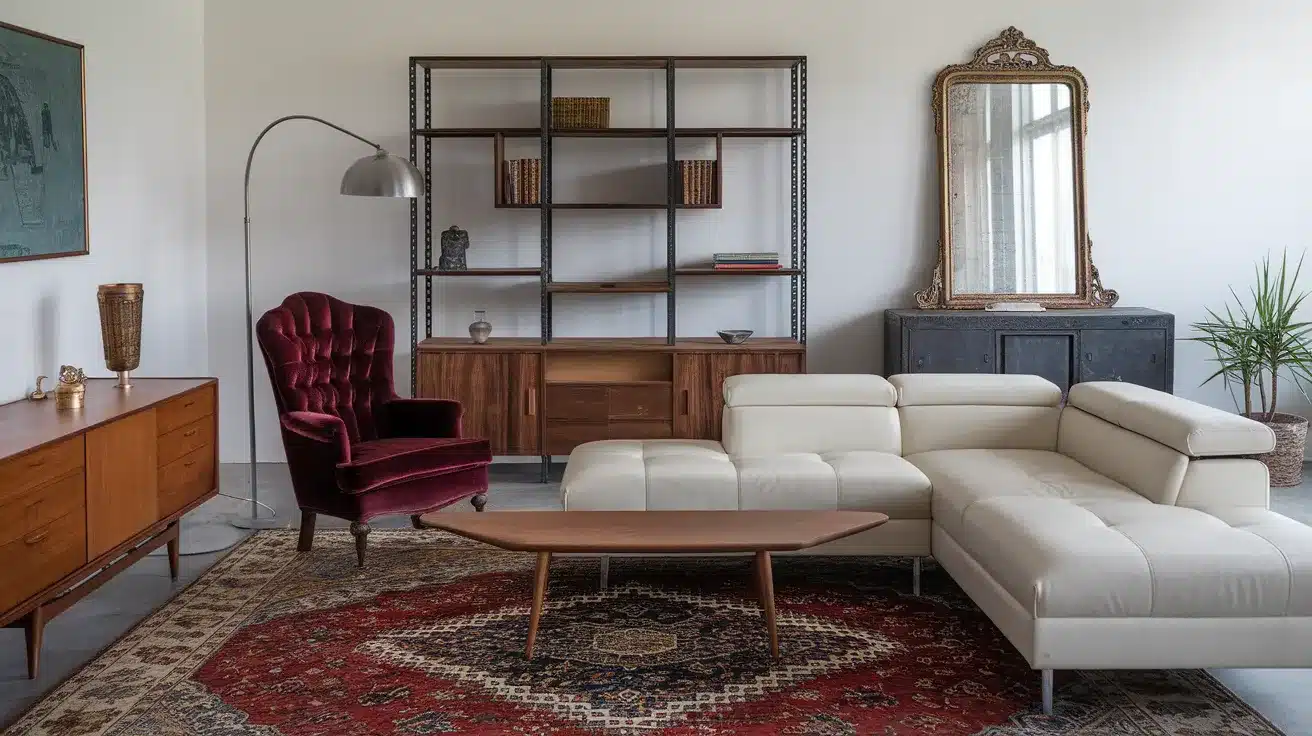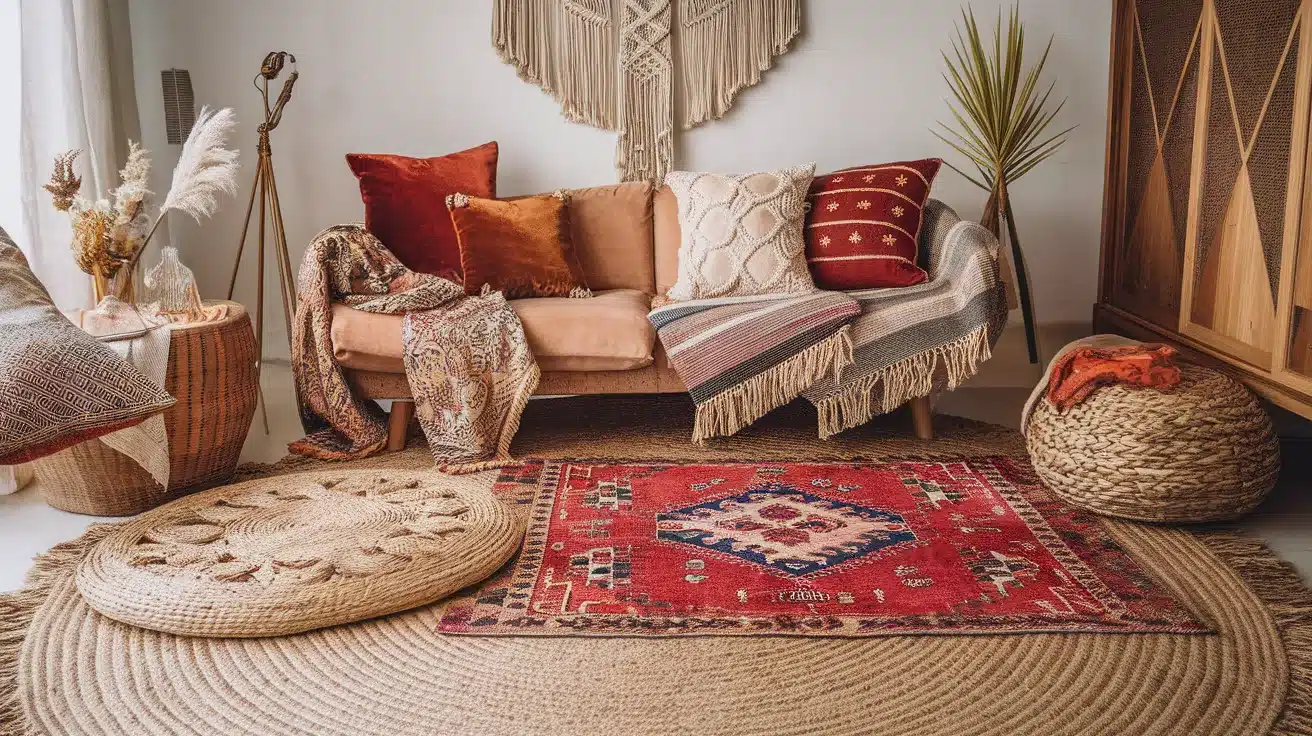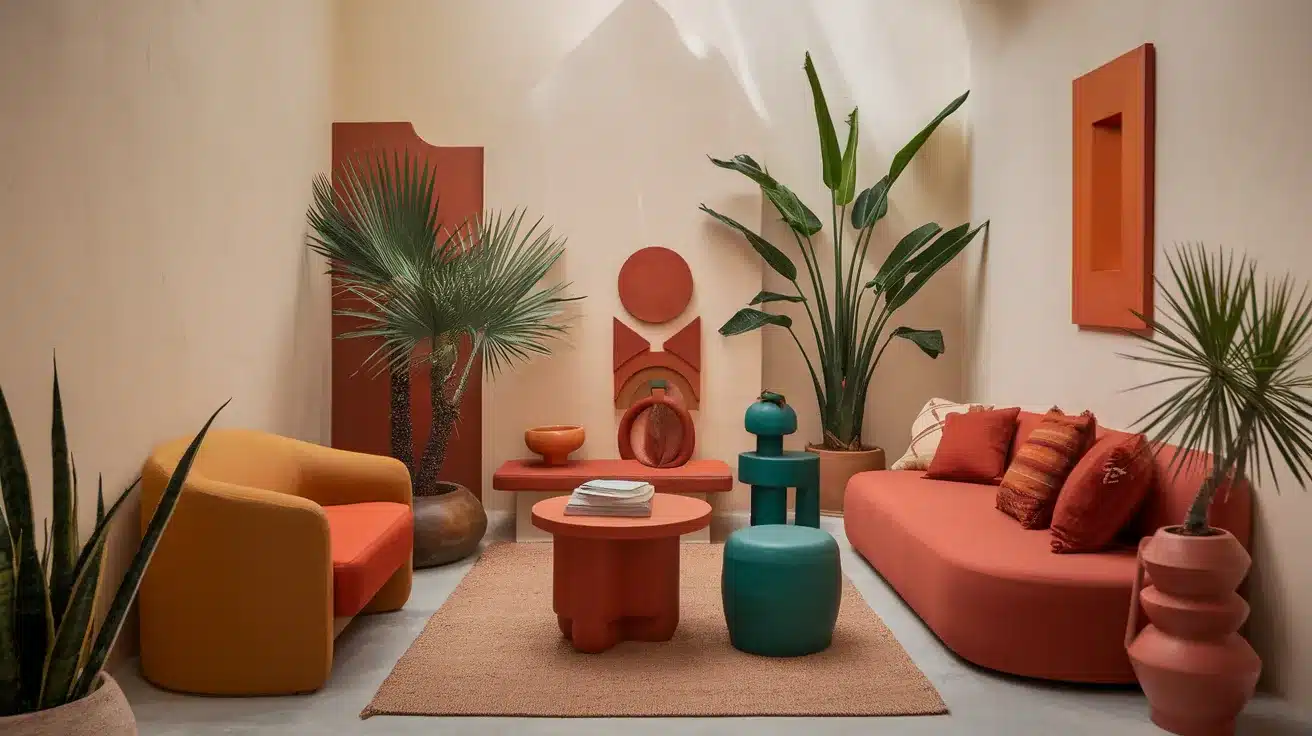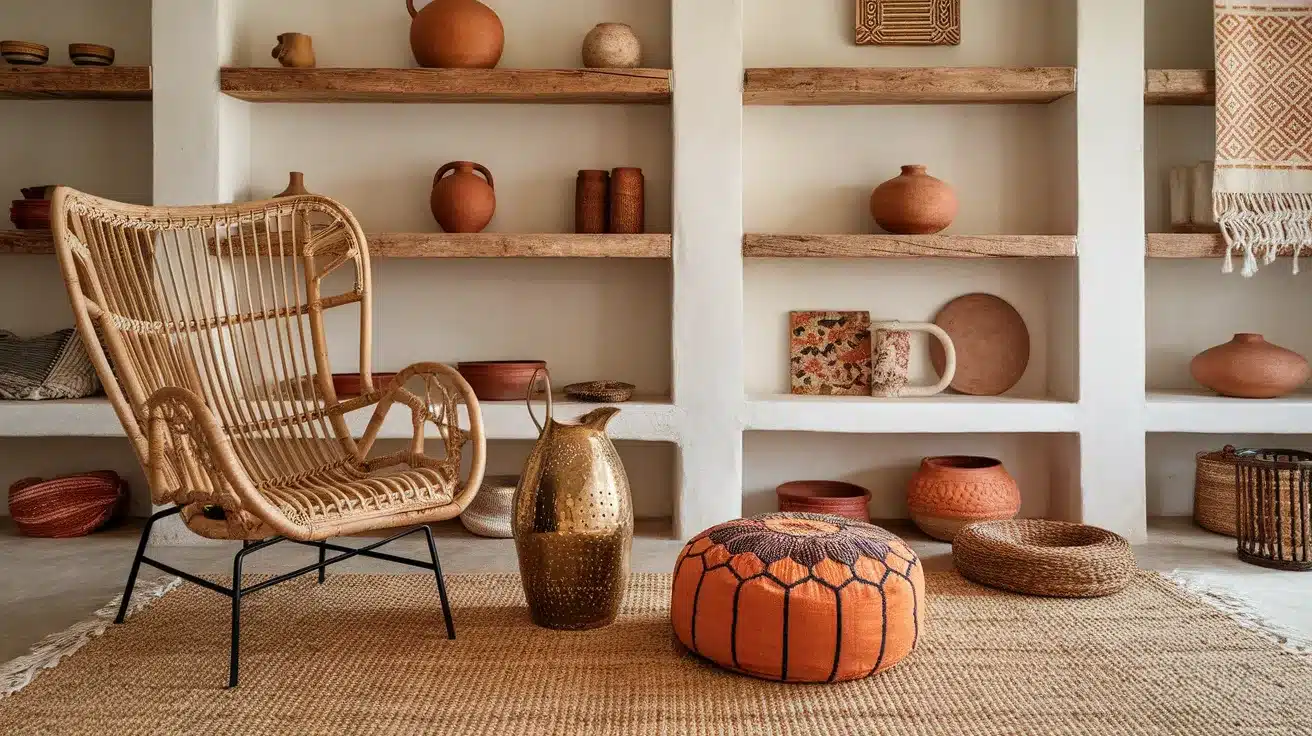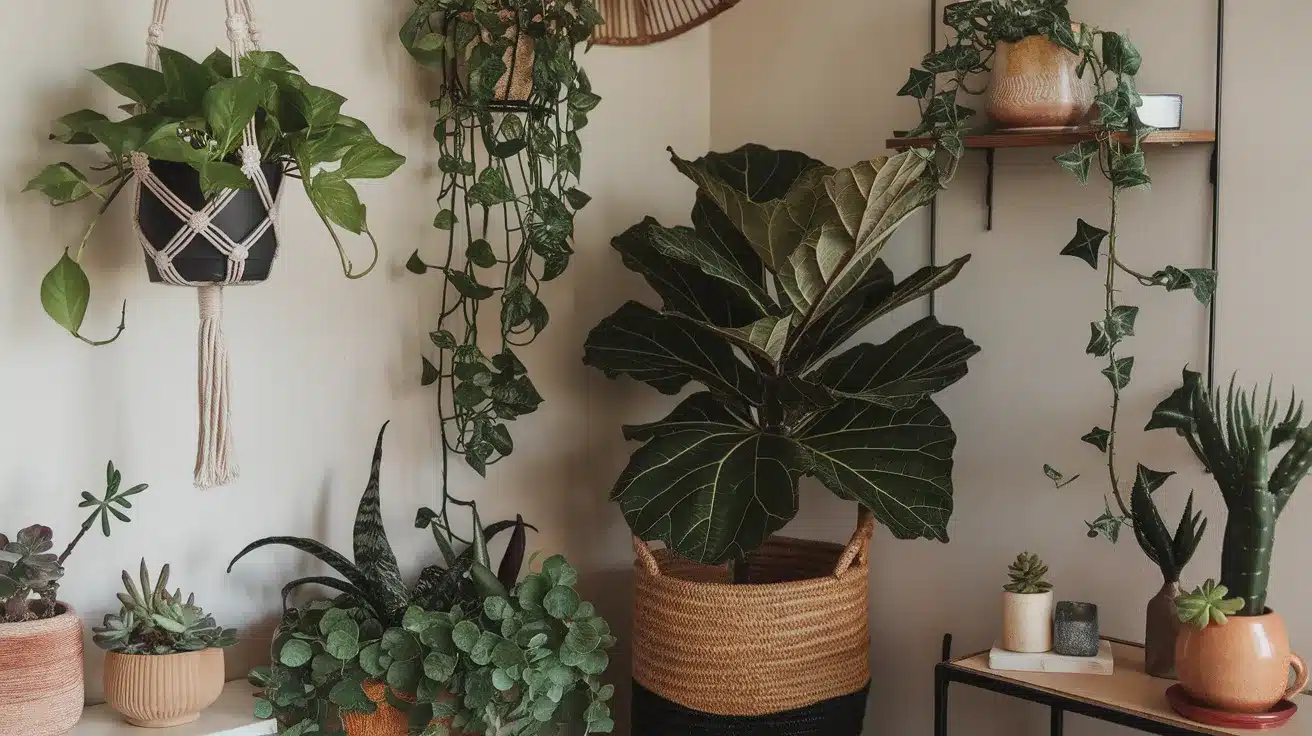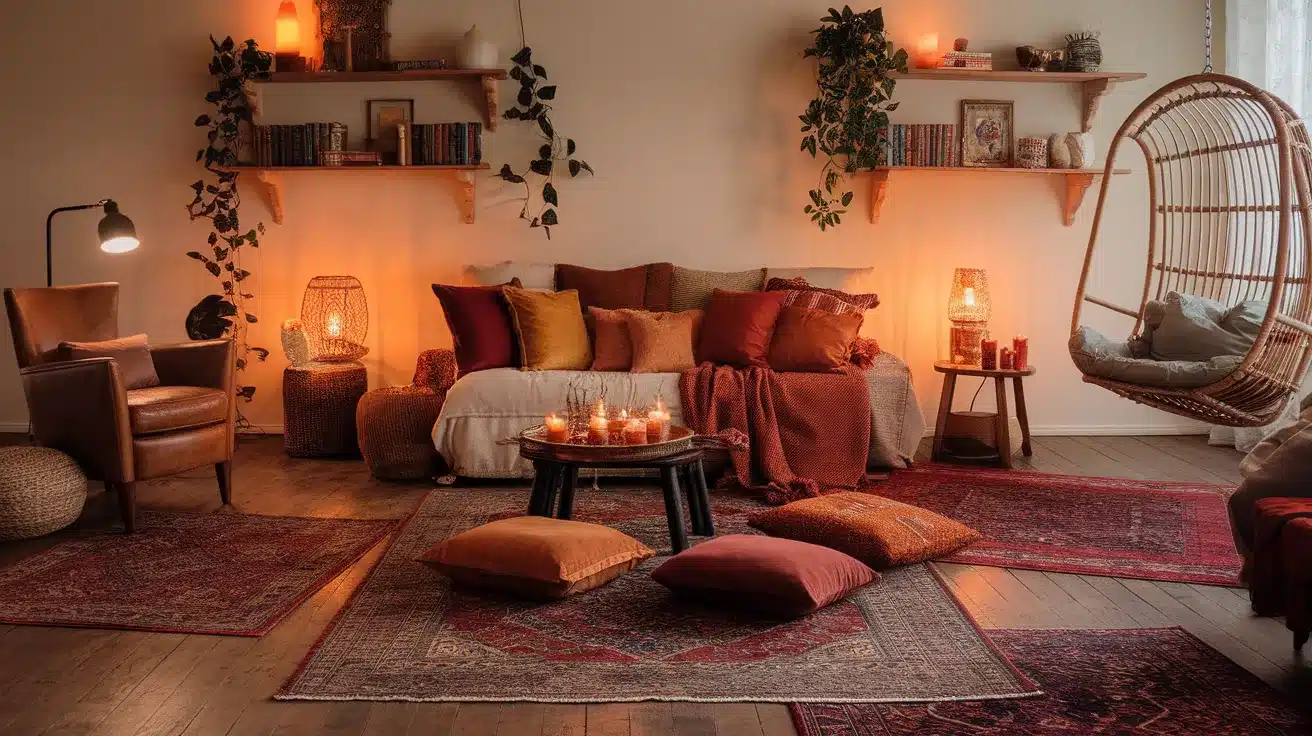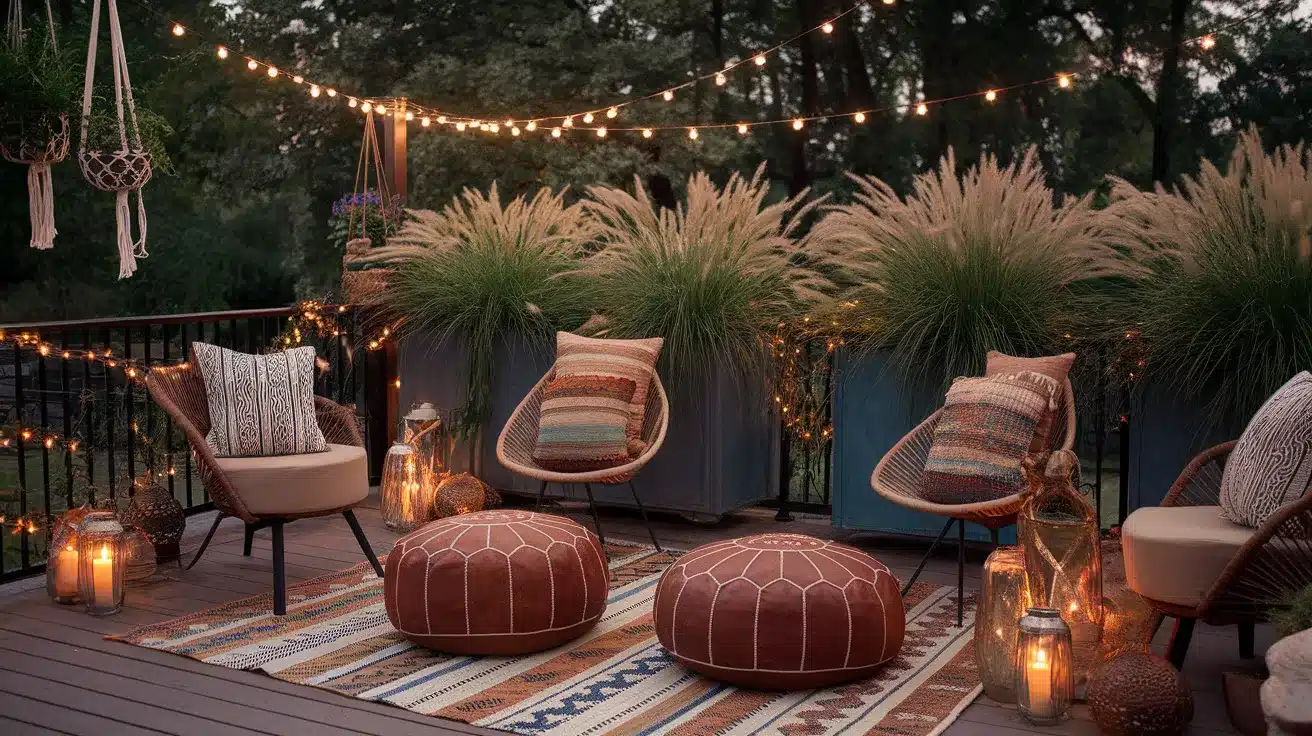Do you feel tired of rigid, cookie-cutter home designs that lack personality and warmth?
Bohemian style offers a refreshing alternative that celebrates creativity, comfort, and individual expression. This free-spirited design approach mixes colors, textures, and patterns in ways that feel natural and lived-in.
You’ll learn how to create spaces that tell your story through vintage finds, rich fabrics, and global treasures. Bohemian interiors welcome guests with cozy corners, layered rugs, and plants that breathe life into every room. This style works for any budget and lets you break traditional design rules.
Keep reading to master the art of bohemian decorating and convert your home into a personal sanctuary that reflects your unique style.
The Origins of Bohemian Style
The Bohemian style started with artists and writers in 19th-century Paris. These creative people lived in affordable neighborhoods and filled their homes with mismatched furniture, colorful fabrics, and items from their travels.
The word “bohemian” comes from the French term for people from Bohemia (now Czech Republic). Parisians used this word to describe artists who lived unconventional lifestyles. They couldn’t afford matching furniture sets, so they mixed old pieces with new finds.
From Artistic Rebellion to Home Design
These early bohemians valued personal expression over social rules. Their homes became galleries for their art, books, and collected treasures. Rich tapestries hung on walls next to paintings and photographs.
Key elements emerged from this lifestyle:
- Layered textiles and patterns
- Mixed furniture styles and ages
- Global artifacts and souvenirs
- Plants and natural elements
- Warm, dim lighting from candles and lamps
The Style Spreads Beyond Paris
By the 1960s, the bohemian spirit spread to other countries. Young people embraced this free-thinking approach to decorating. They rejected formal living rooms and stuffy dining sets.
The hippie movement adopted many bohemian ideas:
- Floor cushions instead of traditional seating
- Handmade crafts and macramé
- Earth tones mixed with bright colors
- Second-hand and vintage pieces
Today’s bohemian style keeps these same principles. It celebrates individuality, creativity, and comfort over perfection.
Key Elements of Bohemian Interiors
Bohemian style breaks traditional decorating rules to create homes that feel personal and lived-in. These five key elements define the boho look and help you build your own free-spirited space.
a. Eclectic Style Approach
Mix old and new pieces without worrying about matching sets. Your grandmother’s vintage chair can sit next to a modern coffee table. This creates visual interest and tells your personal story.
The eclectic approach means:
- Combining different furniture periods and styles
- Choosing pieces you love, not what magazines say you should have
- Creating collections over time instead of buying everything at once
- Letting each room grow naturally with your finds
Pro tip: Follow the “rule of three” when mixing styles. Combine no more than three different furniture periods in one room to avoid chaos while keeping things interesting.
b. Layered Textures and Fabrics
Bohemian rooms feel cozy because of multiple fabric layers. Think rugs stacked on rugs, throw pillows in different materials, and wall hangings that add softness.
Essential textures include:
- Velvet cushions for luxury and warmth
- Macramé wall hangings or plant holders
- Woven throws draped over chairs and sofas
- Kilim or Persian rugs layered for depth
- Linen curtains that filter light softly
Touch matters more than looks. Run your hands over different fabrics before buying. Rough jute next to smooth silk creates the contrast that makes boho style work.
Pro tip: Start with your largest textile (like a rug) and layer smaller pieces on top. Use odd numbers of pillows and throws for a more natural, unplanned look.
c. Rich and Earthy Color Palettes
Warm, earthy colors form the base of bohemian style. These colors make rooms feel cozy and grounded, like being wrapped in a favorite blanket.
Core boho colors:
- Rust and terracotta for warmth and energy
- Mustard yellow to brighten dark corners
- Deep ochre for rich, sophisticated tones
- Burnt orange as an accent color
Add jewel tones sparingly:
- Emerald green in pillows or plants
- Sapphire blue in ceramic pieces
- Rich purple in wall art or fabrics
Balance bright colors with neutrals like cream, beige, or soft gray. This keeps rooms from feeling too busy or overwhelming.
Pro tip: Use the 60-30-10 rule. Choose 60% neutral earth tones, 30% warm colors, and 10% bright jewel tone accents for perfect color balance.
d. Natural and Global Materials
Bohemian style celebrates handmade items and natural materials. These pieces add character and connect your home to different cultures and craft traditions.
Popular natural materials:
- Rattan furniture for lightweight, casual seating
- Jute rugs that add texture underfoot
- Raw wood shelves and tables with visible grain
- Clay pottery in earth tones and organic shapes
- Stone accents like marble bookends or river rocks
Look for handcrafted pieces at flea markets, artisan fairs, and small shops. Imperfections make these items special and authentic.
Global influences add worldly charm:
- Moroccan poufs for extra seating
- Indian block-print fabrics
- Mexican ceramic tiles
- African woven baskets
Pro tip: Buy one statement piece from each material category (wood, clay, fiber, metal) to create variety without overwhelming your space. Mix textures but keep the color palette consistent.
e. Plants as Living Decor
Plants bring life and color to bohemian spaces. They soften hard edges and create the relaxed, natural feeling that defines boho style.
Create plant layers at different heights:
- Hanging plants like pothos or spider plants from ceiling hooks
- Floor plants such as fiddle leaf figs or rubber trees in large planters
- Shelf plants including small succulents and trailing ivy
- Window plants that filter sunlight naturally
Choose planters that match your style:
- Woven baskets for a natural look
- Ceramic pots in earth tones
- Macramé plant hangers for texture
- Vintage brass or copper containers
Mix plant types for visual interest. Combine leafy plants with spiky cacti, and flowering plants with simple green varieties.
Pro tip: Group plants in odd numbers and vary their heights by at least 6 inches. Place the tallest plant in back, medium in middle, and shortest in front for a natural, forest-like arrangement.
These five characteristics work together to create the relaxed, personal feeling that makes bohemian interiors so appealing. Start with one element and gradually add others as you find pieces you love.
Boho Style vs. Other Interior Styles
Bohemian style stands apart from other popular design trends because it celebrates imperfection and personal stories. While other styles follow strict rules, boho gives you freedom to mix, match, and make mistakes.
Here’s how bohemian style compares to three popular interior design approaches:
| Style Element | Bohemian | Scandinavian | Modern | Farmhouse |
|---|---|---|---|---|
| Color Palette | Warm earth tones, jewel accents, rich layers | White, gray, soft pastels, light woods | Black, white, gray, bold accent colors | White, cream, muted pastels, natural wood |
| Furniture Approach | Mixed periods, vintage finds, collected over time | Clean lines, functional, light woods | Sleek, geometric, minimal decoration | Distressed wood, antique pieces, rustic charm |
| Clutter Level | Collected items, layered accessories, full surfaces | Minimal objects, clean surfaces, hidden storage | Almost no accessories, empty surfaces | Selective vintage items, organized displays |
| Texture Focus | Multiple textures layered together | Natural textures, simple weaves | Smooth surfaces, minimal texture contrast | Raw wood, rough metals, simple fabrics |
| Pattern Use | Mixed patterns, global prints, bold combinations | Minimal patterns, geometric shapes | Solid colors, simple geometric patterns | Subtle stripes, checks, floral prints |
| Lighting Style | Warm, dim, multiple sources, candles | Bright natural light, simple fixtures | Bright task lighting, statement fixtures | Warm lighting, vintage-style fixtures |
| Plant Integration | Jungle-like layers, hanging plants, many varieties | Few plants, simple pots, clean presentation | Minimal plants, architectural shapes | Herbs, simple arrangements, practical choices |
Why Bohemian Style Welcomes Imperfection
Unlike other design styles, bohemian decorating celebrates the imperfect and unfinished. Your sofa doesn’t need to match your chairs. Your art can hang at different heights. Your books can stack on floors and tables.
Other styles demand perfection:
- Scandinavian rooms look like magazine photos with everything in its place
- Modern spaces require expensive, matching furniture sets
- Farmhouse style needs the “right” kind of vintage pieces
Bohemian style welcomes happy accidents:
- A paint drip on your wall becomes part of the character
- Mismatched dining chairs tell the story of different finds
- Worn fabric edges show a piece has been loved and used
The Story Behind Every Piece
Bohemian homes tell personal stories through collected objects. Each item has meaning the rug from your trip to Morocco, the lamp from a flea market, the plant cutting from a friend.
Other styles focus on the look, not the story:
- Scandinavian style values function over personal meaning
- Modern design prioritizes form and current trends
- Farmhouse style recreates a specific time period
Pro tip: Don’t buy everything at once for your bohemian space. Collect pieces over months and years. The best boho rooms develop slowly as you find items that speak to you personally.
Your bohemian home should feel lived-in from day one, not like a showroom waiting for life to happen. Mix your grandmother’s quilt with a modern lamp. Combine your travel souvenirs with thrift store finds. Let your personality shine through every choice.
This freedom to be imperfect makes bohemian style perfect for real people living real lives. Your home becomes a reflection of who you are, not what a designer thinks you should be.
Bohemian Style in Different Rooms
Each room in your home can embrace bohemian style while serving its unique purpose. Here’s how to bring boho flair to your most-used spaces.
Living Room: A Colorful Sanctuary of Comfort
Your bohemian living room should feel like a warm hug when you walk in. Layer multiple rugs on the floor and pile soft cushions on your sofa. Mix seating options with floor pillows, a vintage armchair, and maybe a hanging swing chair.
Use warm lighting from table lamps and candles instead of harsh overhead lights. Display your book collection, travel souvenirs, and plants on open shelves. Rich colors like rust, mustard, and deep green create the perfect backdrop for relaxation.
Pro tip: Create conversation areas by grouping furniture in circles rather than lining walls.
Bedroom: Cozy Layers, Ambient Lighting
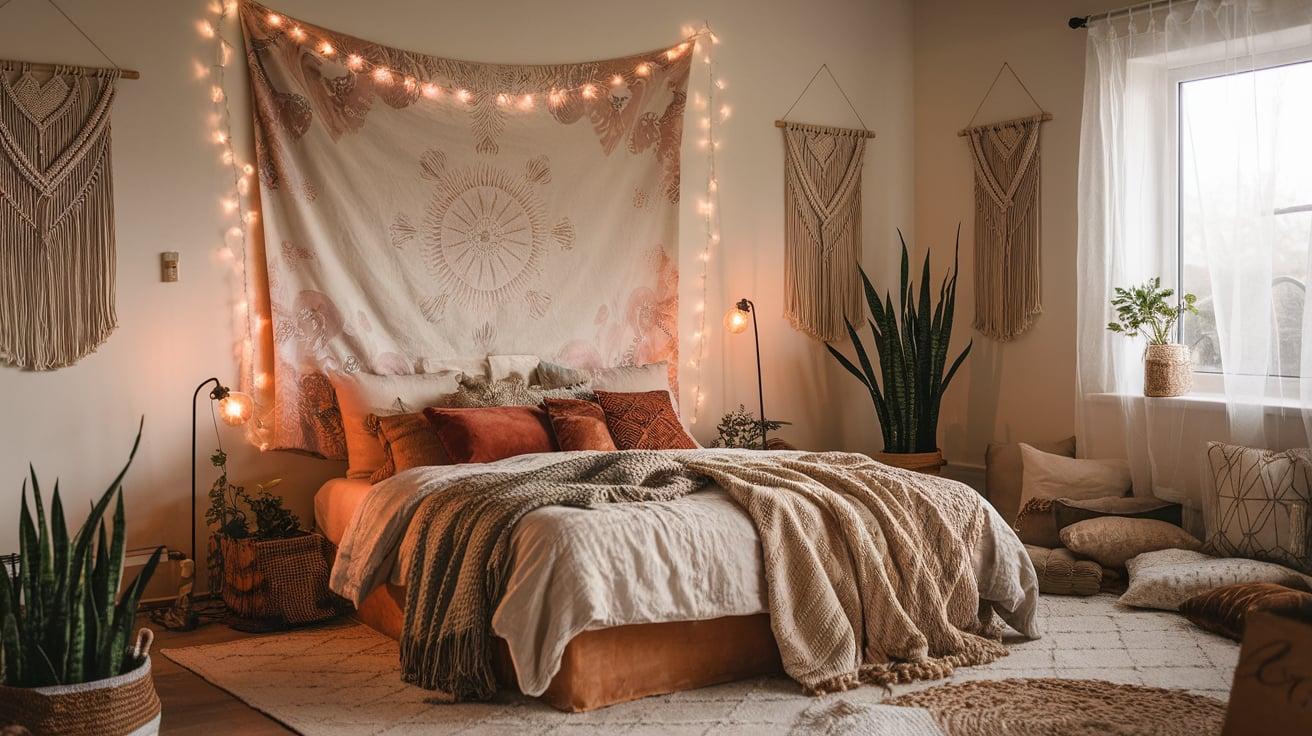
Turn your bedroom into a dreamy retreat with soft textures and gentle light. Hang a tapestry behind your bed as a headboard or add macramé wall hangings. Layer your bed with throws in different textures velvet, linen, and faux fur work well together.
String fairy lights around windows or above your headboard for romantic lighting. Use floor lamps with warm bulbs instead of bright ceiling fixtures. Add plants like pothos or snake plants that thrive in low light.
Pro tip: Keep a basket beside your bed for extra blankets and create a cozy reading nook with floor cushions.
Home Office: A Creative Haven
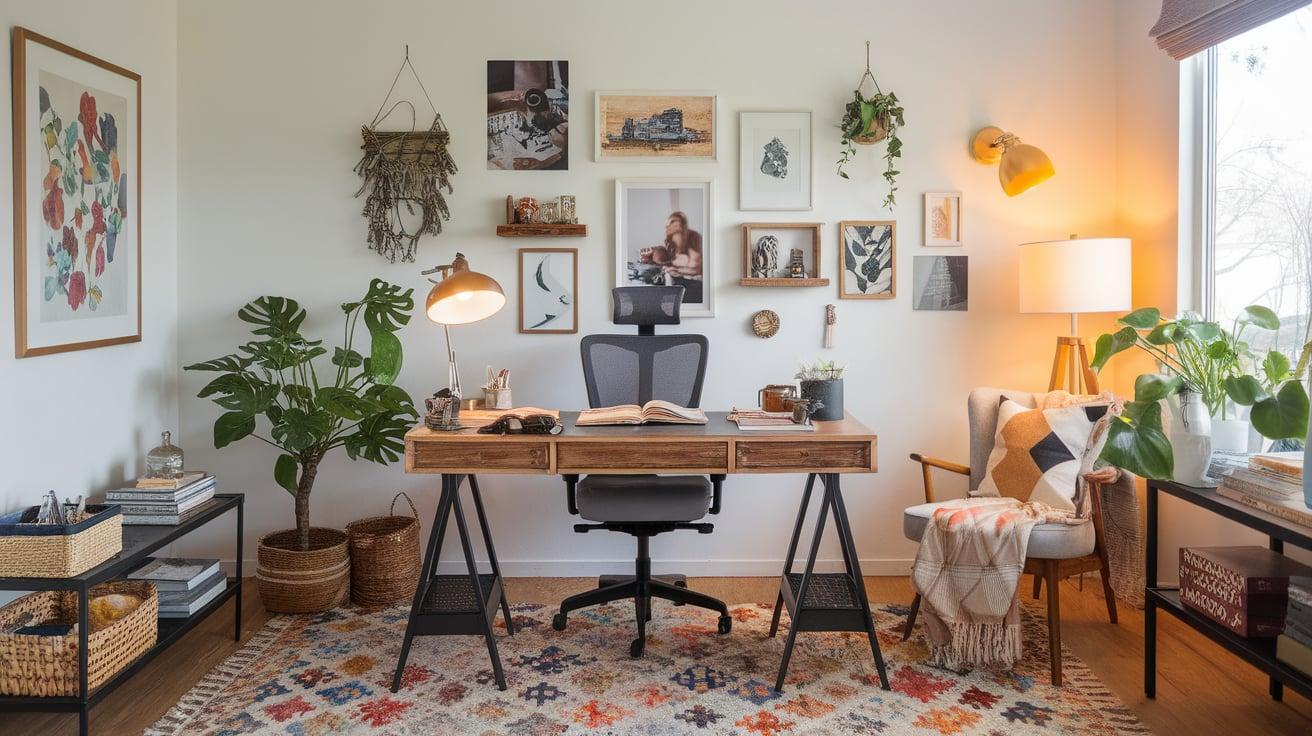
Make your workspace inspire creativity with bohemian touches that keep you motivated. Add a colorful rug under your desk and hang inspiring artwork on walls. Use woven baskets to organize supplies and add plants that improve air quality.
Mix vintage and modern furniture an old wooden desk with a modern chair works perfectly. Create a gallery wall with photos, prints, and small shelves for trinkets. Use warm task lighting from table lamps rather than fluorescent bulbs. Include a comfortable reading chair for breaks.
Pro tip: Change your wall art seasonally to keep your creative energy fresh and flowing.
Outdoor Patio: Rugs, Poufs, Fairy Lights
Extend your bohemian style outdoors to create a magical evening retreat. Place weather-resistant rugs on your deck or patio and add Moroccan poufs for flexible seating. String fairy lights overhead or wrap them around railings for soft illumination after dark.
Use outdoor cushions in earth tones and global patterns on chairs and benches. Add large planters with trailing plants and tall grasses for privacy. Include lanterns and candles in glass holders for windproof lighting. Hang macramé plant holders from ceiling hooks.
Pro tip: Layer different height lighting sources to create depth and make your outdoor space feel like an extension of indoors.
Conclusion
Bohemian style offers something most design trends can’t: the freedom to be yourself. While other styles demand perfection and matching sets, boho celebrates the beauty in collected treasures, mixed textures, and lived-in comfort.
Your home should tell your story through every vintage find, layered rug, and trailing plant. The rich colors, global influences, and natural materials create spaces that feel authentic rather than staged. This isn’t about following rules it’s about breaking them.
Start small with a few textiles or plants, then let your bohemian space grow naturally over time. Each piece you add should bring you joy and reflect your personal taste. The most beautiful boho homes aren’t created overnight; they evolve as you do.
What’s your favorite bohemian element to add to a room? Share your boho decorating wins and challenges in the comments below.

